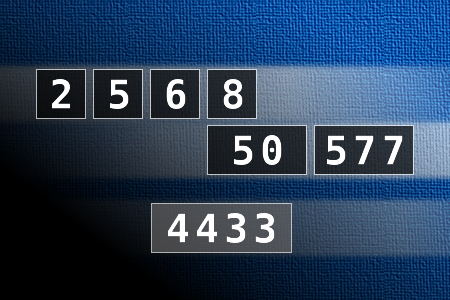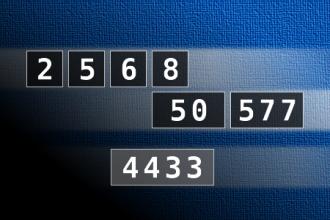Calculate the number 4433
NUMBERMANIA: Calculate the number 4433 using numbers [2, 5, 6, 8, 50, 577] and basic arithmetic operations (+, -, *, /). Each of the numbers can be used only once.Correct answers: 2
#brainteasers #math #numbermania

